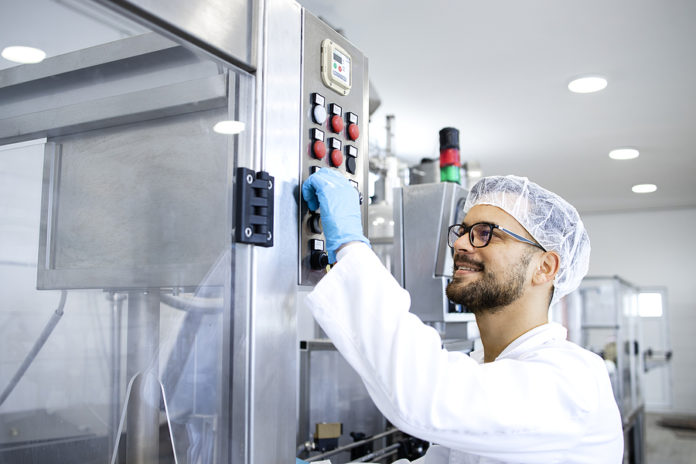
By Russell Fadel, CEO, Augmentir
The Great Resignation, the Great Reshuffle, skills gap, labor shortages – all of these terms in our modern lexicon are indicative of the disruptions and churns in today’s manufacturing workforce.
These disruptions were the case for one of the world’s largest snack food companies. This organization faced a number of challenges largely centered around high worker turnover, specifically in their maintenance groups, that was resulting in increased manufacturing downtime and quality issues.
Productivity, quality, and downtime issues arose when machines stopped working or required a preventative maintenance routine. Although employees alerted maintenance teams to make the needed repairs, the time to get the machines back up and running was often longer than expected, which greatly impacted production.
This wasn’t a simple fix. As with most manufacturers today, the company wasn’t able to just hire skilled maintenance workers due to the tight labor market. Furthermore, there was a lack of standardization with processes and many of the shop floor routines the company was using were leading to poor quality and increased errors. Unfortunately, such challenges are not unique to this company – there’s a significant labor shortage in manufacturing right now that’s directly fueling these issues. According to a 2021 study by Deloitte and The Manufacturing Institute, the manufacturing labor gap could lead to 2.1 million unfulfilled jobs by 2030.
These problems extend beyond the retiring baby boomer generation and the skills gap associated with the newer generation of workers coming on board. Those issues have been a discussion point for many years, but today, there’s a deeper problem that surrounds the fact that workers just aren’t sticking around.
In the four years prior to the start of the pandemic, the tenure rate in manufacturing decreased by 20%. The pandemic has exacerbated this figure, causing a 58% increase in resignations in manufacturing since its start in 2020. The current reality is that workers are hard to find and hard to keep. This dynamic is creating problems that are mounted on top of existing retiring workforce problems and the skills gap already fueling significant issues within the manufacturing industry. The bottom line? Many manufacturing companies simply don’t know who’s going to show up each day. That variability in the workforce, and the aforementioned shifting workforce dynamics are making it hard, if not impossible, to meet safety, quality, and productivity goals.
Shifting the hiring bar to diversify the workforce
So, what’s the solution? One option is choosing digital software tools that can support a more efficient onboarding and training process. The goal of this snack food company was to reduce downtime by relying more on self-guided operations and shifting toward autonomous maintenance, thus empowering their operators to perform some of the more basic maintenance and preventative maintenance routines instead of relying on an understaffed maintenance group.
In essence, they wanted to shift the hiring bar. They wanted to be less reliant on hiring skilled maintenance workers and set their sights on ramping up on-the-job training and onboarding and achieving standard work with a highly variable workforce.
How companies can digitize and optimize their workforce
A solid first step to circumventing labor and skills shortage issues is digitizing work. It’s surprising how many manufacturers, even larger companies, still rely on paper-based work instructions and training guides. Immediate value is typically gained simply by digitizing those instructions, as it allows a wider range of workers to do their job safely and correctly while also providing a level of standardization. But beyond just digitizing work instructions, it is also important to offer digital troubleshooting and support. In real time, this looks like providing your workforce with on-the-job, rapid access to subject matter experts, troubleshooting guides, knowledge-based articles, and other resources that empower them to perform their best work.
With the foundation of a connected and more digitized workforce, manufacturers can start to gain data-driven insight into how their workers are performing and use AI-based solutions to leverage this knowledge to make a real impact in the area of workforce development. Having a workforce that is connected, digitized, and empowered with individualized training and support can be key to manufacturers overcoming labor shortages and maintaining optimal levels of productivity.
In addition, the captured data regarding how their workers are performing enables them to deliver continuous improvement in the areas that matter the most – ranging from work process improvement and productivity opportunities to training or upskilling and reskilling.
In the case of the snack food company, the combination of implementing an AI-based digitized platform backed by a dedicated work plan yielded excellent results including:
- 27% reduction in equipment downtime
- 76% decrease in training time for new hires
Takeaways and lessons learned
So what value and lessons learned can other manufactures take away from the snack food company’s example?
Strategically select tasks that can shift to self-guided operation and autonomous maintenance
All manufacturers experience unplanned downtime and productivity issues related to equipment maintenance. Key to minimizing the impact of these issues is identifying tasks that can ultimately be shifted to less disruptive solutions such as autonomous maintenance and self-guided operation.
Develop a dedicated work plan ahead of implementing changes or partnering with vendors
The snack food company’s results were enhanced by having a dedicated work plan that was leveraged in concert with the smart digitization platform implementation. By strategically identifying and prioritizing the areas most in need of improvement, the company was able to provide a roadmap to success for the vendor to leverage when implementing the solution.
Provide your multigenerational workforce with the tools and training to help them be productive and successful.
The simple truth is that the manufacturing industry is still feeling the effects of the Great Resignation, and one result is that more and more companies are considering redesigning their work models. A wise focus given that 49% of millennials (who now represent the majority of the nation’s workforce) plan to seek new employment within the next two years.
It’s a new generation, and if manufacturers want to remain competitive in hiring in this ultra-competitive environment, they need to embrace the variable nature of the labor market and meet workers where they are. The cost of hiring and training new workers is much higher than investing in the workforce you have by providing them with the training and support to deliver their best work and contribute to a more efficient – and profitable – operation.
 Russ Fadel is a serial entrepreneur and the CEO and Co-Founder of Augmentir. Prior to founding Augmentir, Russ founded four successful companies in the industrial software sector, including the two most recent – ThingWorx, the leading Industrial IoT (IIoT) platform company (acquired by PTC), and Lighthammer, the pioneer in enterprise manufacturing intelligence software (acquired by SAP). Russ has been intimately involved in the last three software revolutions around humans and machines in manufacturing and service. Augmentir is a continuation of this theme.
Russ Fadel is a serial entrepreneur and the CEO and Co-Founder of Augmentir. Prior to founding Augmentir, Russ founded four successful companies in the industrial software sector, including the two most recent – ThingWorx, the leading Industrial IoT (IIoT) platform company (acquired by PTC), and Lighthammer, the pioneer in enterprise manufacturing intelligence software (acquired by SAP). Russ has been intimately involved in the last three software revolutions around humans and machines in manufacturing and service. Augmentir is a continuation of this theme.







